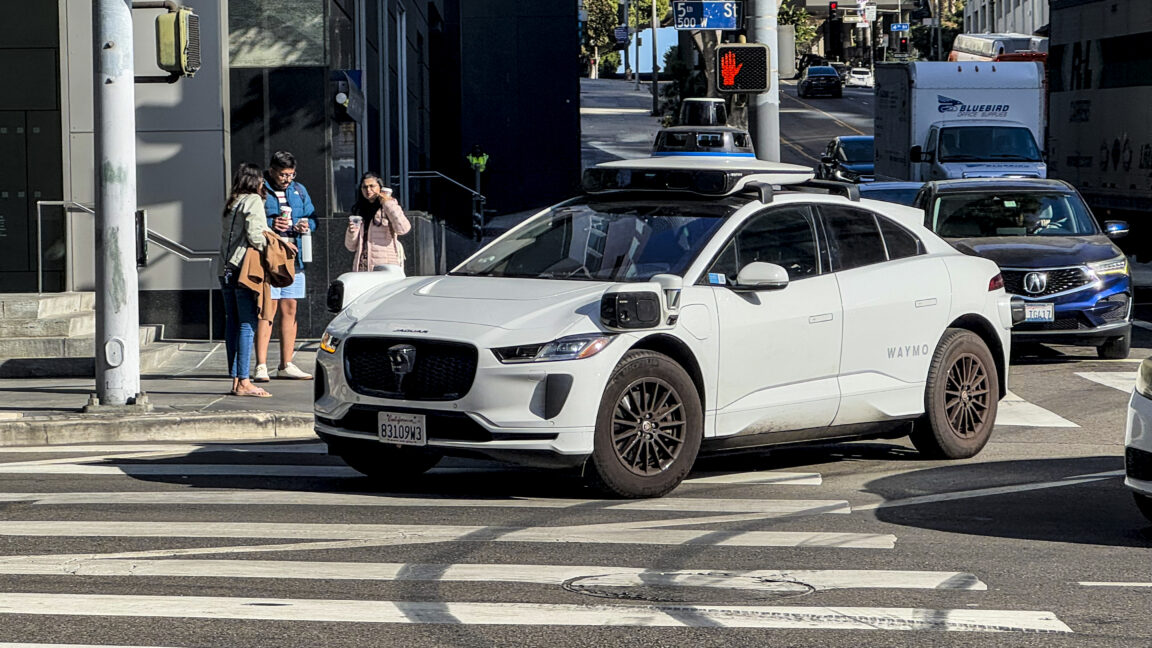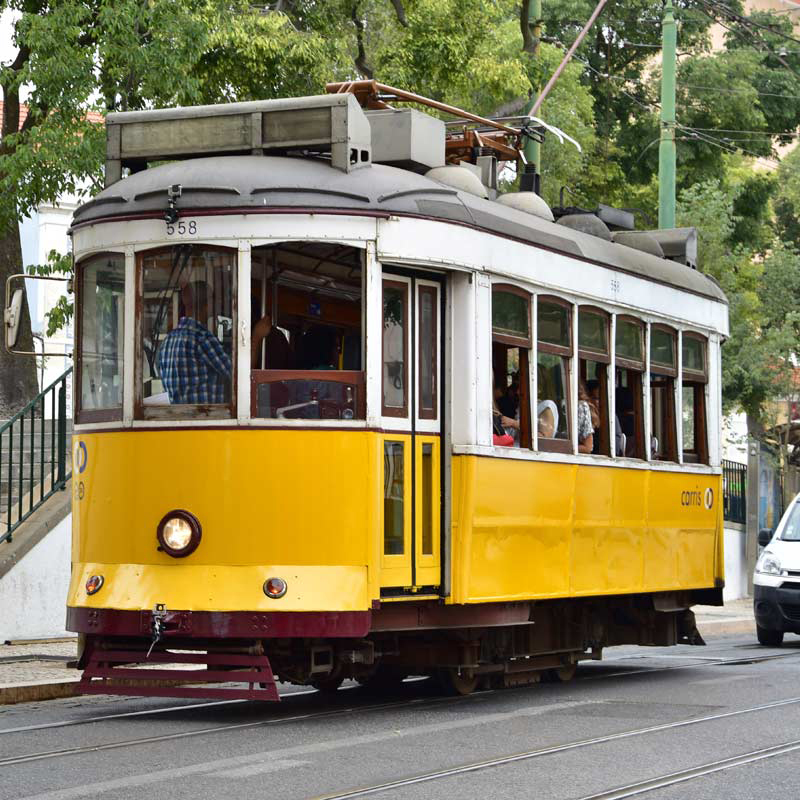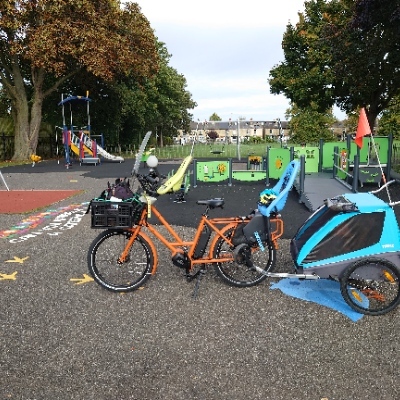Why are we still doing this? Just fucking invest in mass transit like metro, buses and metrobuses. Jesus
Also, Note that this is based on waymo’s own assumptions, that’s like believing a 5070 gives you 4090 performance…
people in america don’t want to ride with public transport because they’re incredibly isolationistic and have a fear of other human beings; so they prefer to drive within “their own 4 walls”, in their own chassis. It’s really about psychology much more than practical feasibility.
Why sell $2 light rail fares when you can sell $40 Waymo fares? Now you’re thinking with capitalism!
That doesn’t solve the last mile problem, or transport for all the people who live outside of a few dense cities.
Yes it does, if done properly. I have stops for four bus lines within walking distance. During peak hours, buses come once every 15 minutes. Trolleys in the city centre, every 10 minutes. Trams, every two minutes, and always packed. Most of the surrounding villages have bus stops. A lack of perspective is not an excuse.
Public transport (with acceptable intervals) is only (practically) feasible in densely populated areas, like cities and maybe the immediate surroundings. There’s no chance every tiny village in the middle of bumfuck nowhere is gonna have even a resemblance of acceptable public transport. You’d need a driver to drive around all day where most trips are completely or mostly empty.
I live on a 40mph road with no sidewalk or shoulder. That is connected to a 45mph road with no sidewalk or shoulder. My nearest bus stop is 3.2 miles away.
I’m not even that far out, I can drive to a major city downtown in 30 minutes.
That’s great that you have all this infrastructure around you, but not everyone does. Like you said, a lack of perspective is not an excuse.
That’s not out of necessity. It’s a design decision. You could have one nearby with the right elected officials and public effort. You also chose where to live, with the ability to know where existing stops are. If you chose the live away from a bus stop or other public transport then that’s on you.
So fuck everyone who can’t afford to, or doesn’t want to, live in the city?
I can, do, and will vote for officials that want to expand public transit. I also appreciate other efforts being taken, because I don’t let perfect be the enemy of the good, and I recognize that no one solution works for everyone.
So fuck everyone who can’t afford to, or doesn’t want to, live in the city?
What the hell? Were did you pull that from my comment?
We need to work to improve public transport everywhere. Switzerland can have timely consistent trains to tiny villages in the fucking alps. We can have it here. We need to push for it though.
People saying “it doesn’t work for me right now so shut up” are actively harmful to the discussion. They’re choosing to be in a position where it doesn’t work at all (though it doesn’t work well for almost anyone in America outside of DC and NYC). I’m not saying “fuck them” I’m saying “your opinion is not relevant if it’s only complaining about doing better because it’s bad for you right now.”
Its like saying we shouldn’t go to the moon because it’s hard right now, or we shouldn’t try to develop nuclear fusion technology because it’s hard right now. I don’t care if it’s hard right now. We’re discussing what could/should be.
Here’s a summary of this thread:
Guy 1 - why is anyone doing waymo when there’s public transit
Guy 2 - last mile problem
Guy 3 - it works great for me in the city surrounded by bus stops, no last mile problem
Me - it doesn’t work great for me barely outside the city. (My point being that it’ll take a lot to get public transit to within 1 mile of where I am, let alone to someone even further from the city)
You - that’s your own fault so stop complaining
Me - so fuck me and everyone farther out than me apparently.
That’s how we got here. I simply stated my situation as it relates to public transit, and you tell me it’s just my own fault and I should shut up.
We have a long way to go to get ubiquitous public transit in America. I doubt we will ever get there. It makes sense to consider other options as well.
I’m saying we should go to the moon AND develop nuclear fusion.
You want to know what’s harmful to discussion? Pricks like you telling people that their opinion is irrelevant.
ROFL ya because taking 5 separate buses to get to work is TOTALLY going to encourage people to get rid of their cars.
Fucking brilliant.
Oh ya and I TOTALLY want to give up my car just so I can be forced to sit next to rude assholes coughing in my face.
These brilliant suggestions are amazing.
Jesus. Ten of the hottest years ever recorded were the last ten. Its time for some major changes. If more people rode public transport it would be better.
All your objections seem to be about how inconvenient it would be for you. Sound kinda self-centered. Act like the only way to get by is to continue to conspicuously consume everything. Get a fuckin grip.
Edited with less profanity and name calling
Fella it isn’t me you need to convince. It’s the billions of other people on the planet you need to convince.
If you think you can force the entire world then by all means and try.
And also clearly you. As you seem to have decided you won’t participate until every single one of the other billions do.
Pretty much. I’m not trashing my life and living in the slums while the rest of the world doesn’t care.
If the world wants more from me then they can step up too.
Well if YOU have a bus stop near you then everyone must! That’s just science!
If you build it they will come
Because having a bus to pick up 7 people in a day is really efficient economically and environmentally…
Much more so than having a car-centric infrastructure. If you start cherry-picking you’ll of course find cases where a car would have been more efficient but public transportation needs to be understood as a whole.
I’m not cherry picking Im just telling you my personal experience and the town I live in
For sure. Just cruising around the countryside on the off chance that someone actually needs the bus that day. They haven’t for the past few but they have to go shopping eventually.
Uh, yes, actually. I know someone like you can’t even fathom the possibility of a public transit system being well-built because you’ve been gaslit into believing that whatever happens in The West is the best humanity can offer, but we’ve got 80 bus and trolley lines criss-crossing the city. As a guesstimate, three quarters of the city is within a 10-minute walk from a stop, and the elderly and disabled who can’t walk benefit from the resulting reduction in traffic.
And all the world is cities! There’s noooooooooo other type of living. Your egocentric view of the world is going to carry you really far.
Public transport can, and does work in rural areas too.
Did you hallucinate that I said anything like it or something? Obviously not every situation is solved by the same concept. Dense city centres – sidewalks, bike paths, trams, human-scale infrastructure. Suburban areas – abolish Euclidean zoning, European-style grid streets, buses, local light rail services. Inter-city transit – high-speed rail. Smaller villages and towns – regional rail. It’s an issue that most of the developed world has solved.
Public transit is not supposed to replace cars altogether, but give people another choice. A transit system that is built well, operated well, and cheap, will reduce the reliance on cars, and make the streets safer for people or services that have to use cars.
It’s better to have a few self driving cars that are safer than everyone owning their own car. It’s like getting gas guzzling vehicles off the road: better to replace a humvee with a sedan than a sedan with an electric.
Good thing we basically got rid of sedans in favor of “light truck” SUVs…
Almost all people can walk a mile. The remainder have special mobility needs.
So we can have autonomous metros, buses and taxis that allow people anywhere when they need it so they don’t rely on having a car?
There’s already an autonomous metro.
Why are we still doing this?
Because there’s a lot of money in it. 10.3% of the US workforce works in transportation and warehousing. Trucking alone is the #4 spot in that sector (1.2 million jobs in heavy trucks and trailers). Couriers and delivery also ranks highly.
The self-driving vehicles are targeting whole markets and the value of the industry is hard to underestimate. And yes, even transit is being targeted (and being implemented; see South Korea’s A21 line). There’s a lot of crossover with trucking and buses, not to mention that 42% of transit drivers are 55+ in age. Hiring for metro drivers is insanely hard right now.
Taking waymo’s numbers at face value they are almost 20x more dangerous than a professional truck driver in the EU. This is a personal convenience thing for wealthy people, that’s it. Fucking over jarvis and Mahmood so we can have fleets of automated ubers…
It’s nonsensical to compare protected highway miles with surface city street miles.
Uber had a net income of 9.86 billion dollars and spent 7.14 billion in operations in 2024. That’s a single transportation company. Do you really think Uber or anyone else is going to ignore researching the technology that could significantly reduce their billions in operations costs?
I’m also not so sure that Europe is 20x safer than the US. A quick search pulled up the International Transport Form’s Road Safety Annual Report 2023 and their data disagrees. The US, even with its really poor showing in the general numbers, is safer than Poland and Czechia (Road fatalities per billion vehicle‑kilometres, 2021). I could see an argument for a 2x gap of Europe outdoing the US, but a 20x? Citation needed.
That’s what happens when you have a reasonable sensor suite with LIDAR, instead of trying to rely entirely on cameras like Tesla does.
Musk: but-but-but people don’t have lidars and can drive! Lidars are expensive! Tesla go brrrrr.
people … can drive
Citation needed
Tesla go durrrrr
Tesla go 🔥🔥🔥🔥
At least the repair for a camera-only front is cheaper after the car crashes into a parked white bus
Tap for spoiler
/s
And are limited to highly trained routes. There’s a reason you only see them in specific neighborhoods of specific cities.
They’re super conservative. I rode just once in one. There was a parked ambulance down a side street about 30 feet with it’s lights one while paramedics helped someone. The car wouldn’t drive forward through the intersection. It just detected the lights and froze. I had to get out and walk. If we all drove that conservatively we’d also have less accidents and congest the city to undrivability.
Back in February, I took a Waymo for the first time and was at first amazed. But then in the middle of an empty four lane road, it abruptly slammed the brakes, twice. There was literally nothing in the road, no cars and because it was raining, no pedestrians within sight.
If I had been holding a drink, it would have spelled disaster.
After the second abrupt stop, I was bracing for more for the remainder of the ride, even though the car generally goes quite slow most of the time. It also made a strange habit of drifting between lanes through intersections and using the turning indicators like it had no idea what it was doing—it kept alternating went from left to right.
Honestly it felt like being in the car with a first time driver.
Maybe the reason they crash less is because everyone around them have to be extremely careful with these cars. Just like in my country we put a big L on the rear of the car for first year drivers.
How long ago was that? Last year I took a couple near Phoenix and they did great, lights or no. The hardest part was dropping me off at the front of a hotel, as people were in and out and cars were everywhere. Still didn’t have issues, just slowed down to 3mph when it had 15 years left or so
just slowed down to 3mph when it had 15 years left or so
Damn, spending 15 years in a car going 3mph sounds terrible.
Haha, yeah I didn’t check that, was eating. 15 yards. I’m actually still sitting there.
Because they are driving under near ideal conditions, in areas that are completely mapped out, and guided away from roadworks and avoiding “confusing” crosses, and other traffic situations like unmarked roads, that humans deal with routinely without problem.
And in a situation they can’t handle, they just stop and call and wait for a human driver to get them going again, disregarding if they are blocking traffic.I’m not blaming Waymo for doing it as safe as they can, that’s great IMO.
But don̈́t make it sound like they drive better than humans yet. There is still some ways to go.What’s really obnoxious is that Elon Musk claimed this would be 100% ready by 2017. Full self driving, across America, day and night, safer than a human. I have zero expectation that Tesla RoboTaxi will arrive this summer as promised.
You’re not wrong, but arguably that doesn’t invalidate the point, they do drive better than humans because they’re so much better at judging their own limitations.
If human drivers refused to enter dangerous intersections, stopped every time things started yup look dangerous, and handed off to a specialist to handle problems, driving might not produce the mountain of corpses it does today.
That said, you’re of course correct that they still have a long way to go in technical driving ability and handling of adverse conditions, but it’s interesting to consider that simple policy effectively enforced is enough to cancel out all the advantages that human drivers currently still have.
You are completely ignoring the under ideal circumstances part.
They can’t drive at night AFAIK, they can’t drive outside the area that is meticulously mapped out.
And even then, they often require human intervention.If you asked a professional driver to do the exact same thing, I’m pretty sure that driver would have way better accident record than average humans too.
Seems to me you are missing the point I tried to make. And is drawing a false conclusion based on comparing apples to oranges.
Waymo can absolutely drive at night, I’ve seen them do it. They rely heavily on LIDAR, so the time of day makes no difference to them.
And apparently they only disengage and need human assistance every 17,000 miles, on average. Contrast that to something like Tesla’s “Full Self Driving” (ignoring the controversy over whether it counts or not), where the most generous numbers I could find for it are a disengagement every 71 city miles, on average, or every 245 city miles for a “critical disengagement.”
You are correct in that Waymo is heavily geofenced, and that’s pretty annoying sometimes. I tried to ride one in Phoenix last year, but couldn’t get it to pick me up from the park I was visiting because I was just on the edge of their area. I suspect they would likely do fine if they went outside of their zones, but they really want to make sure they’re going to be successful so they’re deliberately slow-rolling where the service is available.
Waymo can absolutely drive at night
True I just checked it up, my information was outdated.
I specifically didn’t ignore that. My entire point was that a driver that refuses to drive under anything except “ideal circumstances” is still a safer driver.
I am aware that if we banned driving at night to get the same benefit for everyone, it wouldn’t go very well, but that doesn’t really change the safety, only the practicality.
driving might not produce the mountain of corpses it does today.
And people wouldn’t be able to drive anywhere. Which could very well be a good thing, but still
I have zero expectation that Tesla RoboTaxi will arrive this summer as promised.
RoboTaxis will also have to “navigate” the Fashla hate. Not many will be eager to risk their lives with them
I think “near ideal conditions” is a huge exaggeration. The situations Waymo avoids are a small fraction of the total mileage driven by Waymo vehicles or the humans they’re being compared with. It’s like you’re saying a football team’s stats are grossly wrong if they don’t include punt returns.
Considering the sort of driving issues and code violations I see on a daily basis, the standards for human drivers need raising. The issue is more lax humans than it is amazing robots.
it’s hard to change humans. It’s easy to roll out a firmware update.
Raising the standards would result in 20-50% of the worst drivers being forced to do something else. If our infrastructure wasn’t so car-centric, that would be perfectly fine.
:Looks at entire midwest and southern usa:
The bar is so low in these regions you need diamond drilling bits to go lower.
What’s a zipper merge?
Screams in Midwestern
I have spent many years in both the midwest and the south.
In some areas of the south, people drive extremely aggressively and there are lots of issues with compliance to various traffic laws but it is usually not difficult to get over if you need to. People will let you in. The zipper merge is a well-honed machine and almost everyone uses it and obeys it.
In the midwest, drivers tend to me more docile, cautious, and lawful overall but have an extreme sense of entitlement over their place in line. “How dare that person use that completely empty lane to get ahead of me! Can they not see there is a line!” They will absolutely not let you in. It does not matter if the zipper merge would improve traffic flow. It just is not going to happen.
Evolution took a billion years too, so it’s kinda fair to say “well, vehicles need some training”.
This would be more impressive if Waymos were fully self-driving. They aren’t. They depend on remote “navigators” to make many of their most critical decisions. Those “navigators” may or may not be directly controlling the car, but things do not work without them.
When we have automated cars that do not actually rely on human being we will have something to talk about.
It’s also worth noting that the human “navigators” are almost always poorly paid workers in third-world countries. The system will only scale if there are enough desperate poor people. Otherwise it quickly become too expensive.
I thought the human operators only step in when the emergency button is pressed or when the car gets stuck?
Do they actually get driven by people in normal operation?
The claim is that the remote operators do not actually drive the cars. However, they do routinely “assist” the system, not just step in when there’s an emergency.
I think they’ve got 1 person watching dozens of cars though, it’s not 1 per car like if there was human drivers.
Could a navigator run you over twice from different companies after they get fired from the first one?
Yeah we managed to just put the slave workers behind a further layer of obfuscation. Not just relegated to their own quarters or part of town but to a different city altogether or even continent.
Tech dreams have become about a complete lack of humanity.
I saw an article recently, I should remember where, about how modern “tech” seems to be focused on how to insert a profit-taking element between two existing components of a system that already works just fine without it.
That’s called “rent-seeking behavior,” and it’s not new
Was it The Enshittification?
@Curious_Canid @vegeta this is the case for the Amazon “just walk out” shops as well. Like Waymo they frame it as the humans “just doing the hard part” but who knows what “annotating” means in this context? And notably it’s clearly more expensive to run than they thought as they’ve decided to do Dash Carts instead which looks like it’s basically a portable self-service checkout. The customer does the checking. https://www.theverge.com/2024/4/17/24133029/amazon-just-walk-out-cashierless-ai-india
Back when I was a fabricator I made some of the critical components used in Amazon stores. Amazon was incredibly particular about every little detail, even on parts that didn’t call for tight tolerancing in any conceivable way. They, on several occasions, sent us one bad set of prints after another. Which we could only discover after completing a run of parts. We’re talking 20-30 thousand units that ended up being scrapped because of their shitty prints. Millions of dollars set on fire, basically.
They became such a huge pain in the ass to work with we eliminated every single SKU they ordered from us.
@SippyCup I have never heard a single good thing from anyone who works with or for them.
Ordering components with unnecessarily small tolerances is stupid and a waste of money but of course they will complain if you can’t make the parts to the specifications.
Why did you even take the order in the first place if you can’t manage to produce them to spec?
of course they will complain if you can’t make the parts to the specifications.
Why did you even take the order in the first place if you can’t manage to produce them to spec?
Where did they say anything about not being able to make the parts to spec?
Why did you even take the order in the first place if you can’t manage to produce them to spec?
They were made to spec, but the specs were wrong.
We produced everything to spec and on time, thanks.
i knew it that AI is just some guy in india responding to my queries.
AI - Actually Indian
The system will only scale if there are enough desperate poor people. Otherwise it quickly become too expensive.
You can also get MMORPG players to do it for pennies per hour for in-game currency or membership. RuneScape players would gladly control 5 ‘autonomous’ cars if it meant that they could level up their farming level for free.
The game is basically designed to be an incredibly time consuming skinner box that takes minimal skill and effort in order to maximize membership fees.
“Damn, I’m sorry my car killed your kids. The Carscape person didn’t get their drop”
The human operators are there for when the AI gets softlocked in a situation where it doesn’t know what to do and just sits there, not for regular driving.
I had a friend that worked for them in the past. They really aren’t that impressive. They get stuck constantly. While the tech down the line might be revolutionary for people who cannot drive for whatever reason right now it still needs a LOT of work.
@MoreFPSmorebetter @vegeta I just can’t see this type of tech working in places with a more pedestrian-first culture / more unpredictable human behaviour, i.e. countries without jaywalking laws. If you tried to drive this through London and people realised it will just have to automatically stop for you (and also *won’t* stop for you out of politeness if you wait hopefully) then everyone will just walk in front of it. What’s the plan, special “don’t stop the Waymo” laws?
Vegas sure has a lot of pedestrians doing a whole lot of unpredictable things.
@ripcord unpredictable but maybe not standard practice? Just a guess, could be a bad assumption! British driving culture is reliant on eye contact and waves and nods and flashes - you have to signal if you’re giving way (to other drivers as well), and say thank you; lots of places where there’s only room for one vehicle on a two way road and someone has to decide who’s going. Might be my failure of imagination but I don’t know how that works with no driver.
It is absolutely common for people to do something unexpected in Las Vegas, particularly near the Strip and other pedestrian-heavy, gambling/drinking-heavy areas.
Erratic driving is also higher than average for most western cities.
My point though was that this is one of Waymo’s main testing areas.
With that said, like other people have mentioned, there are a lot of potential gotchas here like Waymo running on fairly limited routes and still potentially needing a lot of human intervention.
Also the idea that someone can shut down or take over control of my car remotely is extremely creepy and dust I piano seeming to me.
No shit. The bar is low. Humans suck at driving. People love to throw FUD at automated driving, and it’s far from perfect, but the more we delay adoption the more lives are lost. Anti-automation on the roads is up there with anti-vaccine mentality in my mind. Fear and the incorrect assumption that “I’m not the problem, I’m a really good driver,” mentality will inevitably delay automation unnecessarily for years.
It’d probably be better to put a lot of the R&D money into improving and reinforcing public transport systems. Taking cars off the road and separating cars from pedestrians makes a bigger difference than automating driving.
In my country at least (US) that’s just not going to happen.
Automation also can be abused, which I’m very very cautious about.
I am once again begging journalists to be more critical
of tech companies.But as this happens, it’s crucial to keep the denominator in mind. Since 2020, Waymo has reported roughly 60 crashes serious enough to trigger an airbag or cause an injury. But those crashes occurred over more than 50 million miles of driverless operations. If you randomly selected 50 million miles of human driving—that’s roughly 70 lifetimes behind the wheel—you would likely see far more serious crashes than Waymo has experienced to date.
[…] Waymo knows exactly how many times its vehicles have crashed. What’s tricky is figuring out the appropriate human baseline, since human drivers don’t necessarily report every crash. Waymo has tried to address this by estimating human crash rates in its two biggest markets—Phoenix and San Francisco. Waymo’s analysis focused on the 44 million miles Waymo had driven in these cities through December, ignoring its smaller operations in Los Angeles and Austin.
This is the wrong comparison. These are taxis, which means they’re driving taxi miles. They should be compared to taxis, not normal people who drive almost exclusively during their commutes (which is probably the most dangerous time to drive since it’s precisely when they’re all driving).
We also need to know how often Waymo intervenes in the supposedly autonomous operations. The latest we have from this, which was leaked a while back, is that Cruise (different company) cars are actually less autonomous than taxis, and require >1 employee per car.
edit: The leaked data on human interventions was from Cruise, not Waymo. I’m open to self-driving cars being safer than humans, but I don’t believe a fucking word from tech companies until there’s been an independent audit with full access to their facilities and data. So long as we rely on Waymo’s own publishing without knowing how the sausage is made, they can spin their data however they want.
edit2: Updated to say that ournalists should be more critical in general, not just about tech companies.
I was going to say they should only be comparing them under the same driving areas, since I know they aren’t allowed in many areas.
But you’re right, it’s even tighter than that.
These articles frustrate the shit out of me. They accept both the company’s own framing and its selectively-released data at face value. If you get to pick your own framing and selectively release the data that suits you, you can justify anything.
@[email protected] @[email protected]
to amplify the previous point, taps the sign as Joseph Weizenbaum turns over in his graveA computer can never be held accountable
Therefore a computer must never make a management decision
tl;dr A driverless car cannot possibly be “better” at driving than a human driver. The comparison is a category error and therefore nonsensical; it’s also a distraction from important questions of morality and justice. More below.
Numerically, it may some day be the case that driverless cars have fewer wrecks than cars driven by people.(1) Even so, it will never be the case that when a driverless car hits and kills a child the moral situation will be the same as when a human driver hits and kills a child. In the former case the liability for the death would be absorbed into a vast system of amoral actors with no individuals standing out as responsible. In effect we’d amortize and therefore minimize death with such a structure, making it sociopathic by nature and thereby adding another dimension of injustice to every community where it’s deployed.(2) Obviously we’ve continually done exactly this kind of thing since the rise of modern technological life, but it’s been sociopathic every time and we all suffer for it despite rampant narratives about “progress” etc.
It will also never be the case that a driverless car can exercise the judgment humans have to decide whether one risk is more acceptable than another, and then be held to account for the consequences of their choice. This matters.
Please (re-re-)read Weizenbaum’s book if you don’t understand why I can state these things with such unqualified confidence.
Basically, we all know damn well that whenever driverless cars show some kind of numerical superiority to human drivers (3) and become widespread, every time one kills, let alone injures, a person no one will be held to account for it. Companies are angling to indemnify themselves from such liability, and even if they accept some of it no one is going to prison on a manslaughter charge if a driverless car kills a person. At that point it’s much more likely to be treated as an unavoidable act of nature no matter how hard the victim’s loved ones reject that framing. How high a body count do our capitalist systems need to register before we all internalize this basic fact of how they operate and stop apologizing for it?
(1) Pop quiz! Which seedy robber baron has been loudly claiming for decades now that full self driving is only a few years away, and depends on people believing in that fantasy for at least part of his fortune? We should all read Wrong Way by Joanne McNeil to see the more likely trajectory of “driverless” or “self-driving” cars.
(2) Knowing this, it is irresponsible to put these vehicles on the road, or for people with decision-making power to allow them on the road, until this new form of risk is understood and accepted by the community. Otherwise you’re forcing a community to suffer a new form of risk without consent and without even a mitigation plan, let alone a plan to compensate or otherwise make them whole for their new form of loss.
(3) Incidentally, quantifying aspects of life and then using the numbers, instead of human judgement, to make decisions was a favorite mission of eugenicists, who stridently pushed statistics as the “right” way to reason to further their eugenic causes. Long before Zuckerberg’s hot or not experiment turned into Facebook, eugenicist Francis Galton was creeping around the neighborhoods of London with a clicker hidden in his pocket counting the “attractive” women in each, to identify “good” and “bad” breeding and inform decisions about who was “deserving” of a good life and who was not. Old habits die hard.So let me make sure I understand your argument. Because nobody can be held liable for one hypothetical death of a child when an accident happens with a self driving car, we should ban them so that hundreds of real children can be killed instead. Is that what you are saying?
As far as I know of, Waymo has only been involved in one fatality. The Waymo was sitting still at a red light in traffic when a speeding SUV (according to reports going at extreme rate of speed) rammed it from behind into other cars. The SUV then continued into traffic where it struck more cars, eventually killing someone. That’s the only fatal accident Waymo has been involved in after 50 million miles of driving. But instead of making it safer for children, you would prefer more kids die just so you have someone to blame?
So let me make sure I understand your argument. Because nobody can be held liable for one hypothetical death of a child when an accident happens with a self driving car, we should ban them so that hundreds of real children can be killed instead. Is that what you are saying?
No, this strawman is obviously not my argument. It’s curious you’re asking whether you understand, and then opining afterwards, rather than waiting for the clarification you suggest you’re seeking. When someone responds to a no-brainer suggestion, grounded in skepticism but perfectly sensible nevertheless, with a strawman seemingly crafted to discredit it, one has to wonder if that someone is writing in good faith. Are you?
For anyone who is reading in good faith: we’re clearly not talking about one hypothetical death, since more than one real death involving driverless car technology has already occurred, and there is no doubt there will be more in the future given the nature of conducting a several-ton hunk of metal across public roads at speed.
It should go without saying that hypothetical auto wreck fatalities occurring prior to the deployment of technology are not the fault of everyone who delayed the deployment of that technology, meaning in particular that these hypothetical deaths do not justify hastening deployment. This is a false conflation regardless of how many times Marc Andreesen and his apostles preach variations of it.
Finally “ban”, or any other policy prescription for that matter, appeared nowhere in my post. That’s the invention of this strawman’s author (you can judge for yourself what the purpose of such an invention might be). What I urge is honestly attending to the serious and deadly important moral and justice questions surrounding the deployment of this class of technology before it is fully unleashed on the world, not after. Unless one is so full up with the holy fervor of technoutopianism that one’s rationality has taken leave, this should read as an anodyne and reasonable suggestion.
I was asking in good faith because the way you talk is not easily comprehensible. I can barely follow whatever argument you are trying to make. I think you are trying to say that we shouldn’t allow them on the road until we have fully decided who is at fault in an accident?
Also, only one death has occurred so far involving driverless cars, which is where a speeding SUV rammed into a stopped driverless car and then the SUV continued on and hit 5 other cars where it killed someone. That’s it. The only death involved a driverless car sitting still, not moving, not doing anything… and it wasn’t even the car that hit the car in which the person died. So I would say it is hypothetical when talking about hypothetical deaths that are the fault of a driverless car.
And yet it’s still the least efficient mode of transport.
What’s more efficient?
In terms of getting to an exact location.
Public transportation only can get you near your target mostly. Not on point like a car, bike etc.
Bicycles? ride/ walk to were you need to be? Why do you need to be driven to an exact point? All the space needed for parking is just wasted.
You need to create a specific scenario in order to make cars seem more efficient than alternatives. They cause more accidents, take up more space while carrying fewer people at any given time while also causing more pollution than other modes of transport.
Automated vehicles are GPS guided. The US is too big to be walking and biking. That is for an urban environment with proper zoning laws, proper planning, and serves what amounts to be an ethnic group who shouldn’t need cars. What makes automated vehicles more efficient is the removal of labor and lower operational costs. The specialization of transporting people to the exact GPS coordinates is much more convenient. The future is automated travel because vehicles can be used more productively on the margin than everybody having to own their own car. Fewer cars, higher use of the car, or less idling, means lower transportation costs throughout, which includes infrastructure itself; the less need for insurance, less pollution, etc. This technology can be used in bus transit but in a potentially dynamic way.
The “US is too big” is such a bullshit excuse since cars are absolutely crap for long distances compared to trains people already walk and cycle in the US. And why is the richest and most powerful (for now at least) country in the world unable to fix it’s zoning laws? Especially since other countries seem to be able to do it.
Yes, efficiency in reducing the amount of people with jobs but not by getting people from a to b. What is convenient is not having to own a car in the first place and be able to get around with ease because of proper urban planning.
The future is automated travel because vehicles can be used more productively on the margin than everybody having to own their own car. Fewer cars, higher use of the car, or less idling, means lower transportation costs throughout, which includes infrastructure itself; the less need for insurance, less pollution, etc. This technology can be used in bus transit systems as well for a less marginal benefit.
Sooo like a what’s already possible with trains and trams? And buses on dedicated lanes would be far easier to automate and be more efficient than cars.
Trains are for long distances. Trams are for pure urban areas. Metros are for connecting cities within a metropolitan group. All those function within a well planned urban structure, not the suburbs, or exurbs. Cars are the most efficient in the US. That is why most Americans own a car. Without a car, you are asking for long walking distances, and long bike rides. City transit systems don’t work in the US, because too many criminals are out in public, people like their own space, and Americans like the convenience of going, and leaving at their own time. Americans like their own space. Again, you are talking about a specific type of living that most Americans don’t really gravitate to. Americans want a large house in a safe neighborhood in the suburbs, or live in the exurbs. They don’t want to live in crime-ridden urban areas, that is not the American dream.
In terms of getting to an exact location, the most efficient is no vehicle, walking.
Cars are less efficient, followed by busses, then probably trains, then boats, then airplanes (unless you parachute).
Cars are the least efficient in terms of moving large numbers of people from places they can then walk from.
It is hard to take you seriously. Open up Google Maps in the USA, and see how long it takes you to walk, and bike to a place. People buy the expense of a car for a reason; biking, and walking, is the least efficient. Transit systems do not work in the US, because everything has to be planned around them. They’re bureaucratic, and rote. City transit systems are the essence of this bureaucracy and rote. It does not serve people as they intend to live.



















